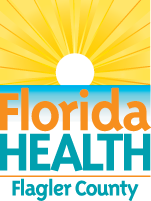DOH-Flagler - What to do if Your Well is Flooded
October 11, 2016
BUNNELL FLA - Department of Health Flagler urges residents to know what to do if your well is flooded. With heavy rainfall from Hurricane Matthew may have made your water unsafe. If you are unsure about the impact of flooding on your well water, either use bottled water, or boil or disinfect all the water you use for drinking, making beverages or ice, cooking, brushing your teeth, washing dishes, and washing areas of the skin that have been cut or injured.
Common unscented household bleach (4 to 8.25% strength) can be used effectively as a chlorine disinfectant. Bring water to a rolling boil for one minute; disinfect water by adding 8 drops (about 1/8 tsp – this would form a puddle about the size of a dime) of plain unscented household bleach (4 to 6% strength) per gallon of water, and then let it stand for 30 minutes. If the water is cloudy after 30 minutes, repeat the procedure once. If high strength bleach is used (8.25% strength), add 7 drops.
If your well has been flooded, please call (386) 437-7358 for information on how to sample your water and where to bring the sample for bacteriological testing. If the test reveals bacteria, the well and water system need to be disinfected.
It is important to disinfect both well and plumbing water with unscented household bleach to ensure that all infectious agents are destroyed. If you have water treatment devices, remove all membranes, cartridges, and filters and replace them after the chlorination process is completed. The amount of chlorine determines the length of time you allow the bleach to remain in your system.
DOH recommends the following steps to disinfect a contaminated well:
If the water is discolored before adding the bleach, run the water until it is clear for up to 10 minutes.
Turn off and then drain your hot water heater— bleach is not effective in water above 105 degrees.
Remove and replace charcoal filters after the disinfecting process is completed.
To avoid adding contamination to the well during disinfection, clean the work area around the top of the well. Then remove grease and mineral deposits from accessible parts of the well head and flush the outside surfaces with 1/2 cup of unscented household bleach in 5 gallons of water.
Turn off the pump. Remove the cap or the well plug on the rubber seal. There are many types of well caps and plugs. If you have questions, you should contact a licensed well driller. If you have a submersible pump, you may also want to contact a licensed well driller for advice on disinfection procedures.
Consult the bleach chart and pour the recommended amount of unscented bleach (4 to 8.25% strength) solution into the well. Try to coat the sides of the casing as you pour. If you get bleach on the pump or wiring, flush it thoroughly with fresh water to prevent later corrosion.
Re-cap or plug the well opening and wait 30 minutes.
Turn on and, if needed, re-prime the pump. Open all of the faucets on the system one at a time. Allow the water to run until there is a noticeable smell of bleach. You may also want to flush the toilets. If you have outside faucets, you may want to direct the water away from sensitive plants. If you cannot detect a bleach odor, repeat the disinfecting process.
Turn off all of the faucets and allow the bleach to remain in the system for at least eight hours.
Backwash water softeners, sand filters, and iron removal filters with bleach water.
Again, open all the faucets and run the water until there is no bleach smell—for up to 15 minutes.
After disinfecting your well, the water needs to be tested to verify that it is safe to drink. Although unscented household bleach is effective against microorganisms, it will not remove chemical contamination that may have gotten into your well. Contact your county health department for sampling instructions to get your water tested.
For further information, please contact your local county health department or visit www.floridahealth.gov or www.FloridaDisaster.org.
About the Florida Department of Health
The department, nationally accredited by the Public Health Accreditation Board, works to protect, promote and improve the health of all people in Florida through integrated state, county and community efforts.
Follow us on Twitter at @HealthyFla and on Facebook. For more information about the Florida Department of Health please visit www.FloridaHealth.gov





Connect with DOH